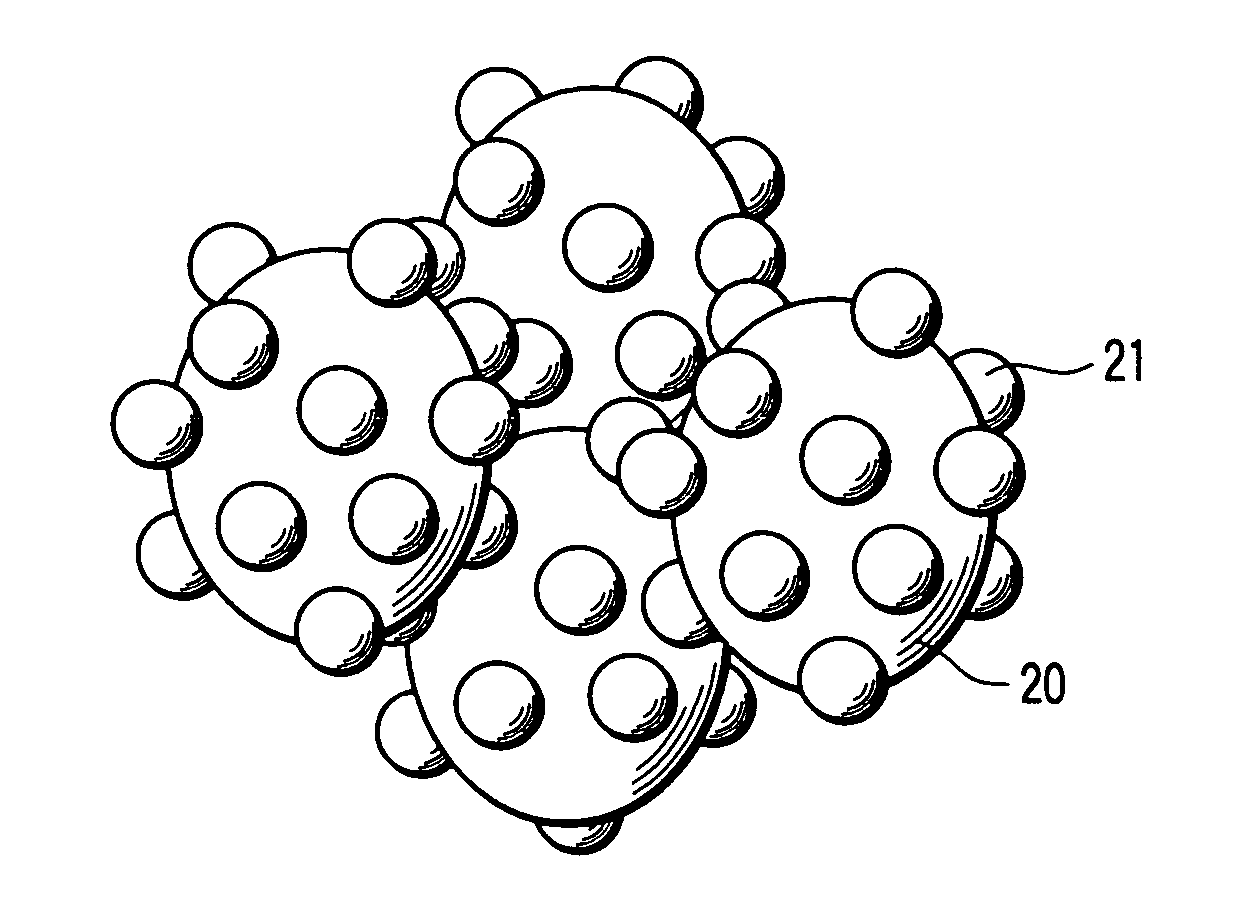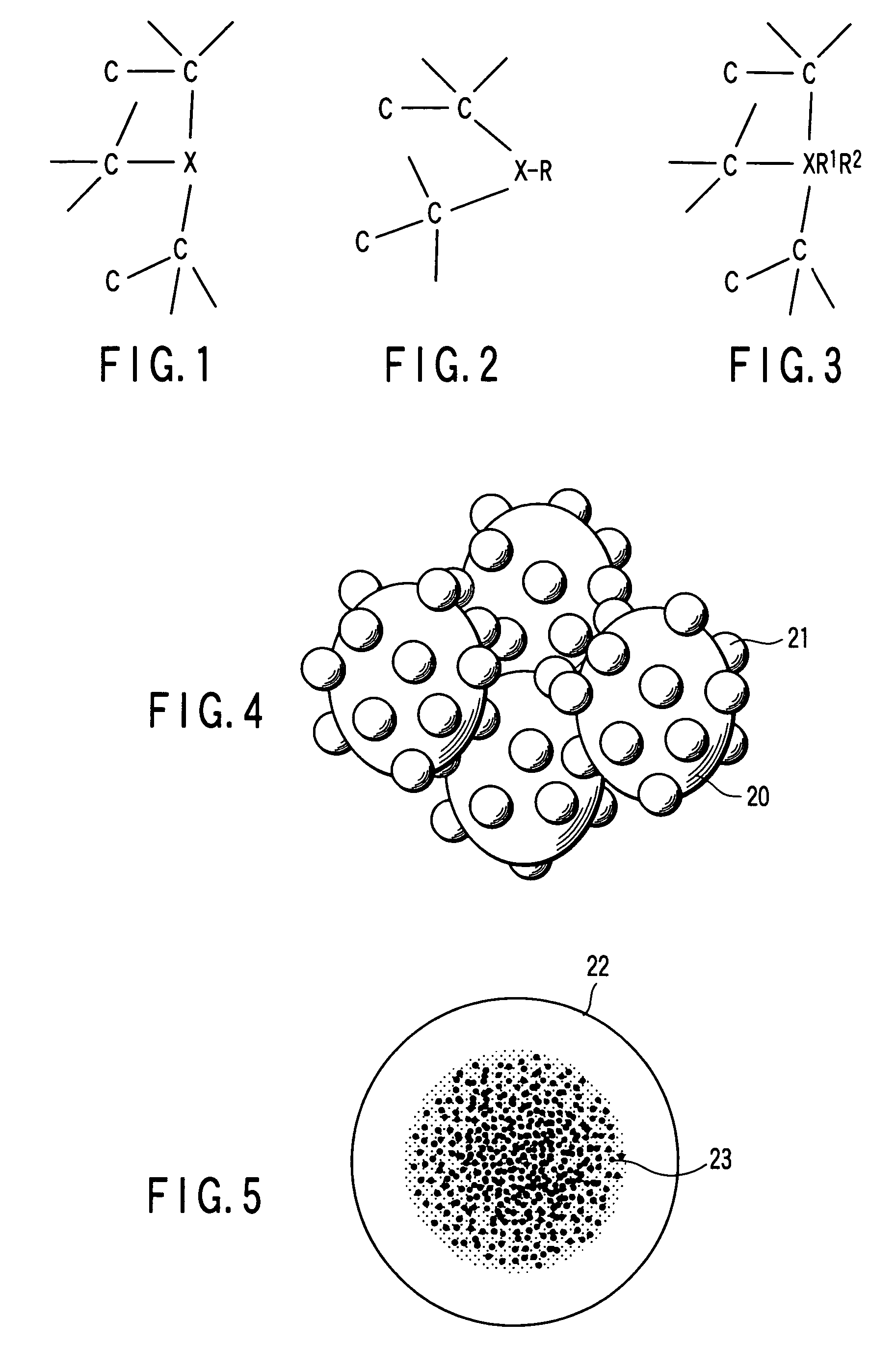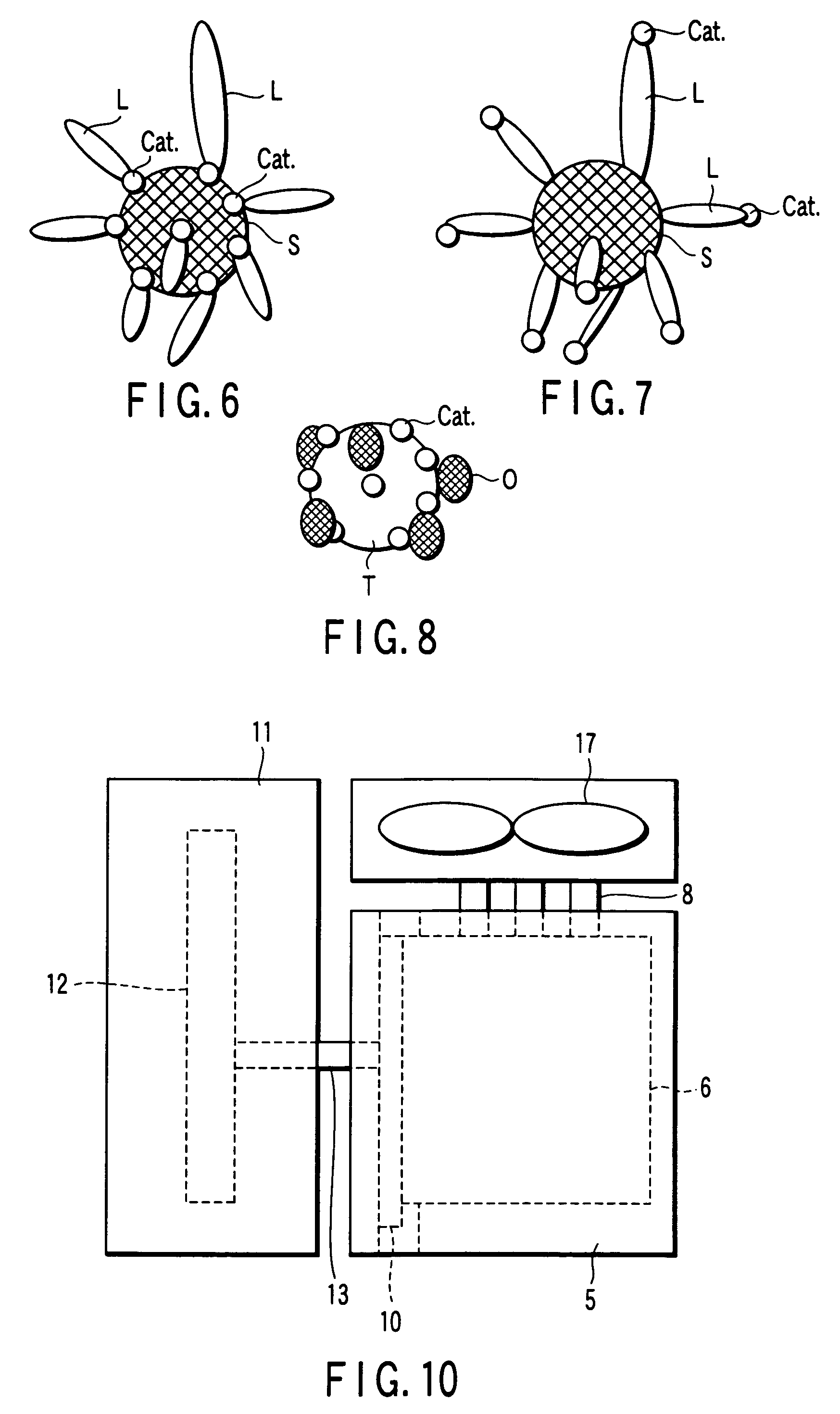Fuel cell catalyst and fuel cell
a fuel cell and catalyst technology, applied in the direction of cell components, metal/metal-oxide/metal-hydroxide catalysts, physical/chemical process catalysts, etc., can solve the problems of voltage characteristic, inferior cell performance of carbon supported catalyst obtained by supporting platinum or platinum alloy on a carbon support, etc., to improve the voltage characteristic of fuel cells
- Summary
- Abstract
- Description
- Claims
- Application Information
AI Technical Summary
Benefits of technology
Problems solved by technology
Method used
Image
Examples
example 1
[0208]Each of the cathode electrode 1N and anode electrode 1N was cut into a square piece of 3.2×3.2 cm so that the electrode area was 10 cm2. NAFION 117 was sandwiched as a proton conductive solid polymer film between the cathode electrode 1N and anode electrode 1N. The resultant structure was bonded by thermocompression bonding at a pressure of 100 kg / cm2 at 125° C. for 30 min, thereby forming a membrane-electrode assembly (MEA). A 2M methanol aqueous solution as fuel was fed to the anode electrode at a flow rate of 0.6 ml / min., and air was fed to the cathode electrode at 60 ml / min. In this state, the open circuit voltage (OCV) of the fuel cell (single cell) was measured, and the single cell voltage (driving voltage) when the current density was 100 mA / cm2 was also measured. The results are shown in Table 1 (to be presented later).
examples 2 – 16 & 1a – 1c
EXAMPLES 2–16 & 1a–1c
[0209]Fuel cells were manufactured and the open circuit voltage and driving voltage of each cell were measured following the same procedures as in Example 1 except that the types of cathode electrodes and anode electrodes were changed as shown in Table 1.
example 17
[0210]Two of the cathode catalyst 2N and 2 g of water were mixed in an agate mortar. Two g of graphite, 4 g of diethyleneglycol, and 0.5 g of lithium carbonate were further added and kneaded. After that, 1.5 g of a PTFE dispersion (PTEF solid component=60 wt %) were added and kneaded to obtain a solid product. A sheet is formed by stretching this solid product. The film thickness was about 80 μm. The sheet was dipped in 6N sulfuric acid to form pores and washed with water several times. Then, the sheet was dipped in a NAFION solution and impregnated with NAFION at a reduced pressure. The resultant sheet was dried to obtain a cathode electrode composition sheet.
[0211]An anode electrode composition sheet was obtained following the same procedure as for the cathode electrode except that the anode catalyst 2N was used instead of the cathode catalyst 2N.
[0212]Water-repellent carbon paper, the cathode electrode composition sheet, NAFION 117, the anode electrode composition sheet, and wate...
PUM
| Property | Measurement | Unit |
|---|---|---|
| particle size | aaaaa | aaaaa |
| diameter | aaaaa | aaaaa |
| particle size | aaaaa | aaaaa |
Abstract
Description
Claims
Application Information
 Login to View More
Login to View More - R&D
- Intellectual Property
- Life Sciences
- Materials
- Tech Scout
- Unparalleled Data Quality
- Higher Quality Content
- 60% Fewer Hallucinations
Browse by: Latest US Patents, China's latest patents, Technical Efficacy Thesaurus, Application Domain, Technology Topic, Popular Technical Reports.
© 2025 PatSnap. All rights reserved.Legal|Privacy policy|Modern Slavery Act Transparency Statement|Sitemap|About US| Contact US: help@patsnap.com



